Submitted by Steve Irons on Mon, 21/04/2014 - 5:35pm
From Part 1 - Hey Prince William Click here <<<<<
What we want – the taking of the Australian government to the International Court of Justice
I would ask you to take back to Buckingham Palace and Westminster a request from certain subjects in the colony to promote the taking of the Australian government to the International Court of Justice for their misuse of their power to openly break the requirements placed on all signatories to the 1951 Convention relating to the Status of Refugees;
http://unhcr.org.au/unhcr/index.php?option=com_content&view=article&id=4...
with impunity and for political purpose related to their own attempt to show themselves to the electorate as the proper parties to govern Australia .
This would take the form of a request for an advisory opinion referred to the International Court of Justice by the UN General Assembly regarding
Accordance with International Law of the turning back of asylum seeker men women & children on the high seas, without due concern for safety, to a third world country not of their choosing, and the shipping without due process of asylum seeker men women and children to a third world country to be detained arbitrarily and for an indeterminate period without trial in a third world low-standard penitentiary system without due protection of their life, health and well-being, and with the application of an over-riding promise never to be relocated as citizens of Australia, purely as an example to other potential asylum seekers never to enter Australian waters
Why am I involving the Queen?
I know that the Queen of Australia can take no part in the lodgement of this request but she has constant interaction with the British Prime Minister David Cameron who can play a major role, together with William Hague, in getting the request through the General Assembly and into the ICJ. Her voice at their regular meetings could help to convey the importance and urgency of such an action.
http://www.dailymail.co.uk/news/article-2249858/The-Queen-wears-Tory-blu...
David Cameron and William Hague know what we are asking for. The British government played a major role in a similar request for an advisory opinion referred to the International Court of Justice by the UN General Assembly regarding
Accordance with international law of the unilateral declaration of independence in respect of Kosovo (Request for Advisory Opinion) 2008
http://en.wikipedia.org/wiki/International_Court_of_Justice_advisory_opi...
The Law – Australia is breaking The Refugee Convention
The Australian government has, at least since 1992 with the introduction of mandatory detention for ‘boat people’, been breaking clear requirements placed on them by their being signatory to the United Nations Convention relating to the Status of Refugees, as amended by its 1967 Protocol (the Refugee Convention).
This breaking of the Convention has been increasing over time with Australia treating asylum seekers (whose human right to seek asylum is clearly described in the Convention) as criminals, placing their lives at risk on the high seas, and putting them behind bars without trial, making an example of them to other potential boat people, (94.5% of whom turn out to be proper asylum seekers as described in the Convention). [94.5%. The number of #asylum seekers found to be #refugees between 2008-2012 who arrived by boat to Australia.] Kon Karapanagiotidis @Kon__K
http://www.immi.gov.au/managing-australias-borders/detention/_pdf/immigr...
Background - International Court of Justice
The International Court of Justice (ICJ) is the principal judicial organ of the United Nations (UN). It operates out of The Hague (Netherlands).
Two Chambers - Contentious Jurisdiction & Advisory Jurisdiction
The ICJ has a chamber for trying legal cases and solving international disputes (what it calls its "Contentious Jurisdiction") and a chamber for giving legal advice (what it calls its "Advisory Jurisdiction"). In its Contentious chamber leaders can be tried for atrocities such as genocide, war crimes and crimes against humanity and sent to prison.
Personally I would like to see the Australian government be taken to the ICJ Contentious chamber but that’s not going to happen.
http://www.icj-cij.org/jurisdiction/index.php?p1=5&p2=1
Only States like Australia have capacity to appear before the Court to seek a ruling on an international legal dispute, such as a disagreement on a question of law or fact, a conflict, a clash of legal views or of interests, etc.
The International Court of Justice - Advisory Jurisdiction
But a special procedure, the 'advisory procedure', is, however, available to international organizations, and so it is possible, if we got the support of one of those organisations, to obtain a ruling that Australia is acting illegally and should completely do away with mandatory detention, stop shipping boat people to other countries and start acting in accordance with the requirements placed upon us by the Convention.
Advisory procedure
The advisory procedure I refer to is described at
http://www.icj-cij.org/jurisdiction/index.php?p1=5&p2=2
Advisory proceedings begin with the filing of a written request for an advisory opinion from the Court addressed to the Registrar by the United-Nations Secretary-General or a director or secretary-general of the entity requesting the opinion. The Court says, the Court's advisory opinions, although not having binding effect, nevertheless carry great legal weight and moral authority. They are often an instrument of preventive diplomacy and have peace-keeping virtues. Advisory opinions also, in their way, contribute to the elucidation and development of international law and thereby to the strengthening of peaceful relations between States.
Why we need this ruling
It seems to me that the mistreatment of asylum seekers has turned Australia into a harsh and hateful society and a way needs to be found to bring this to an end or we will pay the price forever. An opinion by the ICJ that this mistreatment is illegal under international law may be what is necessary for both major parties to see sense and stop this mistreatment.
Who are asylum seekers and refugees?
The following notes are provided by https://www.humanrights.gov.au/asylum-seekers-and-refugees-guide
“An asylum seeker is a person who has fled their own country and applied for protection as a refugee.
“The United Nations Convention relating to the Status of Refugees, as amended by its 1967 Protocol (the Refugee Convention), defines who is a refugee and sets out the basic rights that countries should guarantee to refugees. According to the Convention, a refugee is a person who is outside their own country and is unable or unwilling to return due to a well-founded fear of being persecuted because of their:
- race
- religion
- nationality
- membership of a particular social group or
- Political opinion.
READ more: https://www.humanrights.gov.au/asylum-seekers-and-refugees-guide
What are Australia’s human rights obligations in relation to asylum seekers and refugees?
“Australia has international obligations to protect the human rights of all asylum seekers and refugees who arrive in Australia, regardless of how or where they arrive and whether they arrive with or without a visa.
“While asylum seekers and refugees are in Australian territory (or otherwise engage Australia's jurisdiction), the Australian Government has obligations under various international treaties to ensure that their human rights are respected and protected. These treaties include the International Covenant on Civil and Political Rights (ICCPR), the International Covenant on Economic, Social and Cultural Rights (ICESCR), the Convention against Torture and Other Cruel, Inhuman or Degrading Treatment or Punishment (CAT) and the Convention on the Rights of the Child (CRC). These rights include the right not to be arbitrarily detained.
“As a party to the Refugee Convention, Australia has agreed to ensure that asylum seekers who meet the definition of a refugee are not sent back to a country where their life or freedom would be threatened. This is known as the principle of non-refoulement.”
READ more: https://www.humanrights.gov.au/asylum-seekers-and-refugees-guide
Human Rights – entitlements under the 1951 Convention
http://www.unhcr.org/4ec262df9.html
Why do refugees need protection?
“States are responsible for protecting the fundamental human rights of their citizens. When they are unable or unwilling to do so – often for political reasons or based on discrimination – individuals may suffer such serious violations of their human rights that they have to leave their homes, their families and their communities to find sanctuary in another country. Since, by definition, refugees are not protected by their own governments, the international community steps in to ensure they are safe and protected. …” http://www.unhcr.org/4ec262df9.html
Who does The 1951 Convention protect?
“The 1951 Convention protects refugees. It defines a refugee as a person whose outside his or her country of nationality or habitual residence; has a well-founded fear of being persecuted because of his or her race, religion, nationality, membership of a particular social group or political opinion; and is unable or unwilling to avail him or herself of the protection of that country, or to return there, for fear of persecution (see Article 1A(2)).” http://www.unhcr.org/4ec262df9.html
What rights do refugees have under The 1951 Convention?-
“The 1951 Convention contains a number of rights and also highlights the obligations of refugees towards their host country. The cornerstone of the 1951
Convention is the principle of non-refoulement contained in Article 33. According to this principle, a refugee should not be returned to a country where he or she faces serious threats to his or her life or freedom. …”
“Other rights contained in the 1951 Convention include:
- The right not to be expelled, except under certain, strictly defined conditions (Article 32);
- The right not to be punished for illegal entry into the territory of a contracting State (Article31);
- The right to work (Articles 17 to 19);
- The right to housing (Article 21);
- The right to education (Article 22);
- The right to public relief and assistance (Article 23);
- The right to freedom of religion (Article 4);
- The right to access the courts (Article 16);
- The right to freedom of movement within the territory (Article 26); and
- The right to be issued identity and travel documents (Articles 27 and 28)” http://www.unhcr.org/4ec262df9.html
What is the difference between a refugee and a migrant?
“Asylum seekers or refugees and migrants have very different experiences and reasons for moving to another country. Migrants choose to leave their home country, and can choose where to go and when they might return to their home country. Asylum seekers and refugees, on the other hand, flee their country for their own safety and cannot return unless the situation that forced them to leave improves.”
https://www.humanrights.gov.au/asylum-seekers-and-refugees-guide
“Refugees are forced to flee because of a threat of persecution and because they lack the protection of their own country.
“A migrant, in comparison, may leave his or her country for many reasons that are not related to persecution, Such as for the purposes of employment, family reunification or study. A migrant continues to enjoy the protection of his or her own government, even when abroad.” http://www.unhcr.org/4ec262df9.html
Consciously mixing the definition of asylum seeker & migrant
In Australia there has been a real & conscious strategy to paint asylum seekers as economic migrants, even though every politician knows that they are not at all, with disasterous consequence to the human rights of asylum seekers.
See for example:
Bob Carr referring to [..."100%, that's 100%"...] of asylum seekers as "economic migrants", an act of bastardry, a cynical manoeuvre to generate a few more votes for Labor in the run up to the election.
http://www.abc.net.au/news/2013-08-14/no-evidence-bob-carr-economic-migr...
How has Australia performed ? - Timeline
What began as an agreement by the Australian government to help the UN look after the human rights of the most vulnerable in the world, under Menzies, Liberal Party PMs, Whitlam and Fraser, has finished up the cynical mistreatment of the most vulnerable at the hands of the rich and powerful for political purpose. This cynical treatment of boat people, the most vulnerable coming to Australia, as criminals, locking them up and making an example of them to try and stead the 'flow' has been getting harsher and harsher since the introduction of "mandatory detention" by Keating in 1992 and the splitting away of humanitarian from migration in 1993. Since Keating, governments on both sides of the political divide have been supporting each other in mistreatment of asylum seekers for political purpose and trying to show who can be the strongest in this mistreatment. This has involved a blatant taking away of basic human rights of the most vulnerable. Here are the key facts in this process:
|
|
Menzies19 December 1949 – 26 January 1966
http://www.civicsandcitizenship.edu.au/cce/menzies_sir_robert,15267.html
Timeline Cut down version borrowed from Refugee Council of Australia READ Full version: http://www.refugeecouncil.org.au/f/rhp-time.php |
|
October 1956 |
The Australian Government “approved of the principle that political asylum and refuge should be available in appropriate instances to various categories of aliens namely Olympic Games visitors, members of visiting trade and other delegations, members of diplomatic and consular missions in Australia, certain other defectors and Asian leaders.” This was in anticipation of the Melbourne Olympic Games, during which several Hungarian Olympians claimed asylum because of the USSR’s invasion of Hungary. |
|
1958 |
The Australian Parliament passes the Migration Act 1958 to manage the entry into, presence in and departure or deportation from Australia of foreign nationals. The Act also regulates Australia's procedures for assessing the claims of asylum seekers and providing protection to refugees. |
|
|
Gough Whitlam5 December 1972 – 11 November 1975 http://nla.gov.au/nla.pic-an12265747
Timeline Cut down version borrowed from Refugee Council of Australia READ Full version: http://www.refugeecouncil.org.au/f/rhp-time.php
|
|
13 December 1973 |
Australia accedes to the 1967 Protocol Relating to the Status of Refugees. The Protocol removes the geographic and time limitations of the original Convention, broadening its scope to create capacity to respond to new refugee situations. |
|
|
Malcolm Fraser11 November 1975 – 11 March 1983
http://www.civicsandcitizenship.edu.au/cce/fraser_malcolm,15396.html
Timeline Cut down version borrowed from Refugee Council of Australia READ Full version: http://www.refugeecouncil.org.au/f/rhp-time.php
|
|
1976 |
The first immigration detention centre is established in Villawood, in a converted section of the migrant hostel established there in 1949. |
|
1978 |
The Australian Government implements a procedure for dealing with onshore applications for refugee status in accordance with the Australia’s obligations under the Refugee Convention. |
|
|
The Galbally Report is released, reviewing existing settlement services and outlining a detailed program of action, particularly to response to the needs of the increased intake of South-East Asian refugees. The arrival of these refugees from 1975 had prompted an expansion of Federally-funded services for new arrivals, including English language teaching, on-arrival accommodation and orientation assistance, interpreting and translating services, assistance with overseas qualifications recognition, and new programs and services were introduced (including ethnic radio and the SBS, Migrant Resource Centres and grants to ethnic community organisations.). |
|
1979 |
The Community Refugee Settlement Scheme (CRSS), a network of volunteer groups, was established to provide assistance to humanitarian entrants with finding accommodation and employment, general orientation and social support. |
|
January 1979 |
The red bikini girl, 18-year-old Liliana Gasinskaya, makes headlines in Australia when she dives out of the porthole of a Russian cruise liner, swims ashore into a media storm and claims asylum. |
|
1981 |
The Fraser Government introduces the Special Humanitarian Program (SHP) in response to unrest in Iran. This will quickly become a major component of Australia’s humanitarian program and focuses on those who are not strictly Convention refugees. |
|
|
Paul Keating20 December 1991 – 11 March 1996
http://kids.britannica.com/comptons/art-170786/Paul-Keating
Timeline Cut down version borrowed from Refugee Council of Australia READ Full version: http://www.refugeecouncil.org.au/f/rhp-time.php
|
|
1992 |
Mandatory detention is introduced for non-citizens who arrive in Australia without a visa. The legislation, which has bipartisan support, disallows judicial review but limits detention at 273 days. |
|
1992 |
Following a major review, the Adult Migrant Education Program was renamed the Adult Migrant English Program and designated specifically as a settlement program for new arrivals. New arrivals without functional English gained a legal entitlement to 510 hours of English tuition. |
|
1993 |
The humanitarian program is split from the migrant program. |
|
1994 |
Mandatory detention is broadened and the 273 day time limit removed. |
|
|
John Howard11 March 1996 – 3 December 2007 http://blogs.crikey.com.au/rooted/2008/12/15/is-this-kevin-rudd-or-john-howard/
Timeline Cut down version borrowed from Refugee Council of Australia READ Full version: http://www.refugeecouncil.org.au/f/rhp-time.php
|
|
1997 |
Management of immigration detention centres is outsourced to private companies. |
|
13 October 1999 |
Temporary Protection Visas (TPVs) are introduced for refugees who arrive without authorisation. TPVs allowed their holders to stay in Australia for three years, after this time they will need to reapply for refugee status. TPV holders could not sponsor family members for resettlement in Australia, were not allowed to return to Australia if they travelled overseas and had limited access to settlement services. |
|
2000 |
Protests take place at Curtin and Woomera detention centres over slow processing and poor conditions, included hunger strikes and lip sewing. |
|
August 2001 |
The Norwegian ship MV Tampa rescues 439 Afghan asylum seekers from international waters near Australia. Captain Arne Rinnan attempts to dock at Christmas Island but is refused entry into Australian waters by Prime Minister Howard, who insists the passengers must disembark elsewhere and sends the SAS onto the vessel. This results in a diplomatic dispute between Australia, Norway, and Indonesia and global media coverage. The asylum seekers are eventually loaded onto a Royal Australian Navy vessel. Most are transported to detention centres in as part of what became known as the Pacific Solution. |
|
1 September 2001 |
The Pacific Solution is implemented. Under the policy, asylum seekers arriving without authorisation are sent to Australian-funded detention camps in Pacific Island states, rather than being allowed to claim asylum on the Australian mainland. |
|
3 September 2001 |
The Australian Defence Force commences Operation Relex to interdict vessels carrying asylum seekers. Between September and December 2001, 13 asylum seeker boats tried and failed to reach Australia’s migration zone: four were intercepted by the Navy and forced back to Indonesia; five were held in custody then immediately sent to Nauru; two were sent to Christmas Island and then Nauru; one was sent to Christmas Island and then Papua New Guinea; and one was the SIEV X, which sank. |
|
October 2001 |
In early October 2001, senior Government officials allege that asylum seekers onboard SIEV 4 had thrown their children overboard in a ploy to secure rescue and passage to Australian territory. The Government releases photos as evidence of this event. It is later revealed that the photos were actually taken during the rescue of passengers as the SIEV 4 was sinking. |
|
19 October 2001 |
SIEV X sinks between Indonesia and Christmas Island. An estimated 146 children, 142 women and 65 men drown. After having spent close to 24 hours in the ocean, 44 survivors are rescued by two Indonesian fishing boats and taken back to Indonesia. Many of the women and children who died were attempting to reunite with husbands and fathers in Australia who were on TPVs, and therefore unable to sponsor the resettlement of their families. |
|
28 October 2001 |
In his campaign for re-election, then Prime Minister John Howard makes the statement “We will decide who comes to this country and the circumstances in which they come.” |
|
Early 2002 |
The Australian Government ‘freezes’ asylum seeker applications from about 2,000 Afghans, sparking riots and protests including hunger strikes and detainees sewing their lips together |
|
23 October 2002 |
The Senate Select Committee for an inquiry into a Certain Maritime Incident, which investigated the "children overboard" affair as well as the Tampa affair, SIEV X and the Pacific Solution, releases its findings. The Committee states that, along with "genuine miscommunication or misunderstanding", "deliberate deception motivated by political expedience" was a factor in "the making and sustaining of the report that children had been thrown overboard from SIEV 4". |
|
6 August 2004 |
The High Court rules that harsh detention conditions are not unlawful. The decision is handed down in the case of Behrooz v Secretary Of The Department Of Immigration And Multicultural And Indigenous Affairs. |
|
6 August 2004 |
The High Court rules that asylum seekers can be detained indefinitely. The decision is handed down in the case of Al-Kateb v Godwin. The Court holds that unsuccessful asylum seekers who could not be removed to another country, despite their wish to leave Australia, could continue to be held in immigration detention indefinitely. |
|
29 June 2005 |
The Migration Act is amended to allow for the detention of children only as a last resort. In reality, families continue to be placed in “alternative places of detention” (as opposed to "detention centres”) where they are still denied freedom of movement and face strict conditions. |
|
20 October 2005 |
The UN Committee on the Rights of the Child recommends that conditions in detention centres be brought up to international standards and that children should be assessed within 48 hours to ensure that there is a real need for them to be detained. |
|
11 May 2006 |
The Australian Government attempts to expand Pacific Solution. In response to anger from the Indonesian Government over the granting of refugee status to 42 West Papuan refugees, the Migration Amendment (Designated Unauthorised Arrivals) Bill 2006 is introduced. The Bill states that all asylum seekers who arrive without authorisation by boat are to be processed ‘offshore’ in places like Nauru or Christmas Island. The amendments would result in asylum seekers undergoing an inferior assessment process, with those found to be refugees having no automatic right to refugee protection in Australia. |
|
2007 |
Construction is completed on the Christmas Island detention facility. Christmas Island is located 2,400km from Perth, 360km from Jakarta and nearly 2,000km from Darwin. It was excised from the Australian migration zone in 2001. Construction of a permanent, purpose-built detention facility began in 2005. Thefacility has been criticized by many human rights and refugee advocacy groups as resembling a maximum-security prison. Despite earlier commitments to detain children as a last resort, the facility included family units, a babies' compound, childcare centre and classrooms. |
|
August 2007 |
A report commissioned by Oxfam and A Just Australia, entitled A Price Too High, finds that the Pacific Solution cost the Australian taxpayer in excess of $1 billion over five years. It reveals processing asylum seekers on Manus Island, Nauru or Christmas Island cost more than $500,000 per person, seven times more than it would have cost to process them n the Australian mainland. |
|
|
Kevin Rudd3 December 2007 – 24 June 2010
Timeline Cut down version borrowed from Refugee Council of Australia READ Full version: http://www.refugeecouncil.org.au/f/rhp-time.php
|
|
December 2007 |
The Rudd Government abolishes the Pacific Solution. This results in the closure of detention facilities on Manus Island and Nauru. |
|
13 May 2008 |
The Rudd Government abolishes Temporary Protection Visas (TPVs). Immigration Minister Chris Evans states "the Temporary Protection visa was one of the worst aspects of the Howard government’s punitive treatment of refugees, many of whom had suffered enormously before fleeing to Australia. There is clear evidence that the TPV arrangements did nothing to prevent unauthorised boat arrivals.” |
|
28 May 2008 |
The UN Committee against Torture releases its report on Australia praising the end of the Pacific Solution but also calling for an end to mandatory detention. |
|
8 September 2009 |
With the votes of some Opposition MPs, the Australian Government ends Australia’s practice of charging refugees for their time spent in detention. Previously, detainees were expected to pay back around $100 a day after being granted protection. For some people this meant tens or even hundreds of thousands of dollars. |
|
October 2009 |
Australian Customs vessel the Oceanic Viking rescues 78 Sri Lankan asylum seekers in Indonesia’s search and rescue zone and attempts to take them to an Indonesian detention centre. The asylum seekers refuse to disembark and do so one month later with the Australian promise of speedy processing and settlement. A year later, 25 were still detained in a Romanian transit facility. |
|
9 April 2010 |
The Australian suspends the processing of asylum applications from Sri Lanka and Afghanistan, for three and six month respectively. The individuals affected are left in detention and a backlog of applications is created. The suspensions are lifted on 6 July and 30 September respectively. |
|
|
Julia Gillard24 June 2010 – 27 June 2013
Timeline Cut down version borrowed from Refugee Council of Australia READ Full version: http://www.refugeecouncil.org.au/f/rhp-time.php
|
|
11 October 2010 |
The Australian Government announces that it will begin moving children and vulnerable family groups out of immigration detention facilities and into community-based accommodation. |
|
15 December 2010 |
SIEV 221 founders off the coast of Christmas Island. 42 people are rescued but up to 50 asylum seekers are believed to have drowned in the accident. |
|
17 January 2011 |
The Australian Government signs a Memorandum of Understanding with the Government of Afghanistan, permitting the involuntary repatriation of failed Afghan asylum-seekers from Australia to Afghanistan, including unaccompanied minors. |
|
February 2011 |
It is revealed that there are 900 people currently in detention who have been found to be refugees but are awaiting ASIO checks, for which there are no time limits. |
|
7 May 2011 |
The Australian Government announces an arrangement with the Malaysian Government whereby 800 asylum seekers who arrive by boat in Australia will be transferred to Malaysia, in return for Australia resettling 4,000 refugees out of Malaysia over the next four years. |
|
25 July 2011 |
The transfer arrangement between Australia and Malaysia is formally signed. |
|
19 August 2011 |
The Australian Government signs a Memorandum of Understanding with Papua New Guinea to re-establish an “assessment centre for asylum seekers” on Manus Island. |
|
31 August 2011 |
The High Court of Australia rules that Australia's transfer arrangement with Malaysia cannot proceed due to the absence of legal protections for refugees and asylum seekers in Malaysia. |
|
25 November 2011 |
Minister for Immigration and Citizenship Chris Bowen announces that the first group of asylum seekers in detention will soon be released on bridging visas. He also announces that asylum claims will be processed under a single system regardless of whether asylum seekers arrive by boat or plane. |
|
13 August 2012 |
After six weeks of consultation and research, the Expert Panel releases a report containing 22 recommendations. These include: working towards the development of a cooperative regional framework for improving protection and asylum systems; increasing Australia’s Refugee and Humanitarian Program to 20,000 places annually; reintroducing offshore processing of asylum seekers in Nauru and Papua New Guinea’s Manus Island; and changing Australia’s humanitarian family reunion policies to make it more difficult for refugees who arrive by boat to reunite with their family members. Central to the Expert Panel’s recommendations is the “no advantage” test, which stipulates that refugees arriving by boat should not receive an “advantage” over refugees awaiting resettlement overseas. On this basis, the Panel proposes that asylum seekers who are processed offshore and found to be refugees should have to “wait” for resettlement for the same amount of time they would have waited if they had applied for resettlement from overseas. The Panel does not specify a “waiting time” or explain how a fair “waiting time” could be calculated. |
|
14 August 2012 |
The Australian Government introduces legislation to allow offshore processing of asylum seekers in Nauru and Papua New Guinea. It is passed by both houses of Parliament and becomes law on 17 August. The legislation strips away legal safeguards for asylum seekers subject to offshore processing, including those which led the High Court to rule the Malaysia arrangement invalid. Any asylum seeker who arrived in Australia on or after 13 August 2012 is now at risk of being processed offshore. |
|
October 2012 |
The Australian Government introduces an “enhanced screening” process for Sri Lankan asylum seekers who arrive by boat. Under this process, an asylum seeker is interviewed by two officers from the Department of Immigration, about their reasons for travelling to Australia. If the asylum seeker raises concerns which suggest that they may have a valid protection claim, they are “screened in” so that their claim can be formally processed. If they do not raise any protection concerns, they are “screened out” and returned to Sri Lanka without having the opportunity to formally lodge a protection claim. The system is criticised for lacking transparency and prevening asylum seekers from being able to have their claims assessed fairly. |
|
21 November 2012 |
Australia begins transferring asylum seekers, including families with young children, to the re-established offshore processing centre on Papua New Guinea’s Manus Island. |
|
21 November 2012 |
Following a significant increase in boat arrivals, the Australian Government acknowledges that it will not be possible to transfer all asylum seekers who arrived by boat on or after 13 August 2012 to offshore processing centres in the immediate future. As a result, some of these asylum seekers will be processed in Australia, but will still be subject to the “no advantage” test. This means that they will be released into the community on bridging visas but will not have the right to work. If they are found to be refugees, they will remain on bridging visas and will not receive a permanent visa until they have “waited” for the same length of time that they would have waited, if they had applied for resettlement overseas. They may also be transferred to Nauru or Manus Island at any time. |
|
16 May 2013 |
The Australian Parliament passes legislation which extends the excision policy to the Australian mainland. This means that asylum seekers who arrive by boat anywhere in Australia cannot lodge a valid protection claim except at the discretion of the Minister for Immigration, and are at risk of being transferred offshore for processing. Previously, the excision policy applied only to excised offshore places, such as Christmas Island. |
|
|
Kevin Rudd27 June 2013 – 18 September 2013
Timeline Cut down version borrowed from Refugee Council of Australia READ Full version: http://www.refugeecouncil.org.au/f/rhp-time.php
|
|
3 July 2013 |
The Government resumes processing of asylum claims for people who arrived by boat on or after 13 August 2012. By this point, the backlog stands at over 20,000. |
|
12 July 2013 |
A second UNCHR report on conditions in the offshore processing facility on Manus Island acknowledges that, while there have been some positive developments, “conditions remain below international standards for the reception and treatment of asylum-seekers”. In particular, UNHCR expresses ongoing concern about the harsh physical living conditions, the mandatory and indefinite detention of asylum seekers, the lack of adequate safeguards in transfer arrangements and shortcomings in the legal framework for refugee status determination. |
|
19 July 2013 |
Prime Minister Kevin Rudd announces a new “Regional Resettlement Arrangement” with Papua New Guinea, whereby all asylum seekers arriving in Australia by boat from 19 July onwards will be transferred to Papua New Guinea for processing and, if they are found to be refugees, permanent settlement. They will not have the opportunity to seek asylum or settle in Australia. |
|
19 July 2013 |
A peaceful protest at the offshore processing facility in Nauru degenerates into a riot. Several buildings are destroyed and over 100 detainees are arrested. On 23 July, a group of present and former Salvation Army staff members who had worked in the Nauru facility release a public statement asserting that “this riot although shocking, was an inevitable outcome from a cruel and degrading policy”. They describe the “constant degradation and suffering” experienced by detainees in the Nauru facility and claim that the riot “was not borne out of malice was not borne out of malice. It was a build up of pressure and anxiety over ten months of degrading treatment, and a planned peaceful protest that degenerated. It was a reaction to a refugee processing system that is devoid of logic and fairness”. |
|
25 and 26 July 2013 |
The UN Human Rights Committee finds that Australia has breached the International Covenant on Civil and Political Rights by indefinitely detaining refugees who have failed security assessments. It asserts that Australia has violated Articles 7 and 9 of the Convention through detaining refugees arbitrarily, failing to provide an effective judicial remedy and subjecting detainees to conditions of detention which are “cumulatively inflicting serious psychological harm upon them”. The Committee directs the Australian Government to provide all refugees in this situation with an effective remedy, including release from detention under appropriate conditions, rehabilitation and appropriate compensation. The full findings can be read here and here. |
|
31 July 2013 |
The average length of time spent in closed immigration detention facilities in Australia drops to 72 days, down from 277 days in November 2011. At the same time, however, the number of children in closed detention reaches an all-time high of 1,992. |
|
3 August 2013 |
The Australian Government signs a new memorandum of understanding with Nauru similar to its Regional Resettlement Arrangement with Papua New Guinea. Asylum seekers who are transferred to Nauru for processing and found to be refugees could be settled in Nauru permanently. |
|
|
Tony Abbott18 September 2013
Timeline Cut down version borrowed from Refugee Council of Australia READ Full version: http://www.refugeecouncil.org.au/f/rhp-time.php
|
|
18 September 2013 |
Operation Sovereign Borders, a military-led border security operation designed to prevent boats carrying asylum seekers from arriving in Australia, commences. |
|
18 October 2013 |
Temporary Protection Visas (TPVs) are reintroduced. TPVs allow their holders to stay in Australia for up to three years, after which time their protection claims will be reassessed. As with the previous TPV policy (in place between 1999 and 2007), TPV holders are not allowed to sponsor their family members for resettlement, cannot return to Australia if they travel overseas and have limited access to settlement services. Unlike the previous policy, TPV holders who are still in need of protection after their visa expires cannot apply for permanent residency. The Minister can grant permanent residency by discretion after a person has held a TPV for five years. |
|
26 November 2013 |
UNHCR reports on conditions in the offshore processing facilities in Nauru and Manus Island find that men, women and children continue to be held in arbitrary indefinite detention and conditions in both sites remain below international standards. Of particular concern is the finding that, since the facilities re-opened in 2012, only one claim for refugee status had been fully processed in Nauru and none had been fully processed in Manus Island. |
|
2 December 2013 |
The Australian Senate passes a disallowance motion preventing the reintroduction of TPVs. |
|
11 December 2013 |
Amnesty International Australia releases a report of its visit to the offshore processing facility in Manus Island. Entitled This is Breaking People, the report asserts that offshore processing in Papua New Guinea “has resulted in a host of human rights violations” and recommends that the Manus Island facility be closed and all asylum seekers be transferred back to Australia to have their claims processed. |
|
14 December 2013 |
In response to the disallowance of TPVs, the Australian Government issues a regulation which renders refugees who arrive by boat ineligible for a permanent Protection Visa. |
|
19 December 2014 |
The Minister for Immigration issues a directive specifying that family visa applications lodged by refugees who arrived by boat should be the lowest processing priority, meaning that they have virtually no chance of success. The directive applies to all family visa applications currently in the pipeline as well as all future applications. People affected by the directive who have an application pending will not have their visa fee refunded should they choose to withdraw their application. There is no priority for families facing compelling or compassionate circumstances. The directive does not apply to Australian citizens. |
|
January 2014 |
In another response to the disallowance of TPVs The Australian Government begins to grant Temporary Humanitarian Concern visas (THCs) to refugees who arrived by boat, as an alternative to TPVs. THCs were originally introduced in 2000 to allow people on Temporary Humanitarian Stay visas (a short-term visa originally developed in 1999 to allow for entry and temporary stay in Australia in humanitarian crisis situations) who were in need of continuing medical attention to remain in Australia. The conditions attached to THCs are similar to those attached to TPVs. |
|
31 January 2014 |
The average length of time spent in closed immigration detention facilities rises to 226 days, the highest level in more than two years. |
|
3 February 2014 |
The Australian Human Rights Commission announces that it will conduct an inquiry into children in immigration detention, to investigate the ways in which life in closed immigration detention facilities affects the health, wellbeing and development of children. The inquiry coincides with the ten-year anniversary of the Commission’s landmark report, A Last Resort? At the time of the announcement, more than 1,000 children are detained in closed facilities. |
Scott Morrison & Illegals
The ABC performed a FactCheck on Scott Morrison’s use of the word ‘illegal’ and his introduction of [IBA=Illegal Boat Arrivals] in his department Fri 13 Sep 2013, 10:22am AEST http://www.abc.net.au/news/2013-09-06/scott-morrison-correct-on-27illegal-entry27-of-people/4939230 and found him to be “Correct”. The ABC got it completely wrong.
“Opposition immigration spokesman Scott Morrison was asked about his use of the term at a National Press Club debate on September 3.
"I've always referred to illegal entry," Mr Morrison said.
"It's the same term that's used in Article 31 of the Refugee Convention, on the convention on people smuggling which defines illegal entry.
"People have illegally entered Australia when they've come without a valid visa."
- The claim: Scott Morrison says people illegally enter Australia when they come without a valid visa and says the term 'illegal entry' is used in international conventions.
- The verdict: Mr Morrison is correct. Based on the definition set out in the United Nations people smuggling protocol, people who have come to Australia without a valid visa have illegally entered the country. That is the case even though these people have not committed any crime, nor broken any Australian or international law.
ABC concluded this even though “Experts contacted by ABC Fact Check say it is not appropriate to use ‘illegal’ when specifically describing asylum seekers or refugees.”
“Professor Jane McAdam, director of the International Refugee and Migration Law Project at the University of New South Wales, says that ‘asylum seekers are not illegal under international law’.
‘By ratifying the Refugee Convention, governments agree precisely not to treat asylum seekers as illegal,’ Professor McAdam said.
“Professor Andreas Schloenhardt, from the University of Queensland law school took a similar view, saying ‘the terms asylum seeker and illegal should not be used together or in the same sentence.”
READ more: http://www.abc.net.au/news/2013-09-06/scott-morrison-correct-on-27illega...
The Article referred to by Scott Morrison that can be found in the United Nations Convention relating to the Status of Refugees, as amended by its 1967 Protocol (the Refugee Convention).is Article 31
- The Contracting States shall not impose penalties, on account of their illegal entry or presence, on refugees who, coming directly from a territory where their life or freedom was threatened in the sense of article 1, enter or are present in their territory without authorization, provided they present themselves without delay to the authorities and show good cause for their illegal entry or presence.
- The Contracting States shall not apply to the movements of such refugees restrictions other than those which are necessary and such restrictions shall only be applied until their status in the country is regularized or they obtain admission into another country. The Contracting States shall allow such refugees a reasonable period and all the necessary facilities to obtain admission into another country.
Any reading of this Article can only conclude that the use of the word ‘illegal’ cannot apply to a refugee. That is the purpose of the Article. It is saying to member States who have ‘illegality’ written into their law that if you assume for whatever reason that the entry is illegal, when you find out that they are a bona fide refugee, this does not apply. This applies even less to Australia because the word ‘illegal’ has been removed from the Migration Act. Scott Morrison is consciously making trouble for asylum seekers by using the fact that the word ‘illegal’ can be found in Article 31 that it somehow applies to refugees. This is one of the worst acts of bastardry that I have ever witnessed being performed by a cabinet minister and shows how low the current government is prepared to go to muddy the waters.
NGOs: Enough Is Enough: It’s Time For A New Approach
Adapted from http://www.refugeecouncil.org.au/n/mr/130813-NewApproach.pdf Joint statement by Australian non-government organisations (NGOs) on the first anniversary of the report on the Expert Panel on Asylum Seekers 13 August 2013
“The negative, distorted, and myopic political debate on refugee and asylum seeker policy has been allowed to go on for far too long. It is time for a new approach which focuses on protection rather than punishment, on facts rather than fear-mongering, and on long-term solutions rather than short-term political gain. Regardless of which party forms the next Government after the Federal election, we call on both major political parties to demonstrate true leadership by working cooperatively to refocus Australia’s policy approach in line with the following principles:
- Stop punitive deterrence-based measures such as offshore processing
- Restore family reunion policy
- End the denial of work rights to asylum seekers living in the community
- End transfer asylum seekers to Papua New Guinea and Nauru for processing and process them onshore
- End policy of permanent settlement in a third country, despite the serious lack of protection capacity in either country
- Put more effort be put into building regional cooperation on refugee protection
- Abandon regressive policies such as reintroducing Temporary Protection Visas (TPVs)
- Abandon policy to turn back boats
- Abandon limiting appeal rights for asylum seekers
- Abandon denial of all Sri Lankan asylum seekers access to Australia’s protection systems which places lives at risk and represent a direct breach of basic principles of international refugee and human rights law
READ more http://www.refugeecouncil.org.au/n/mr/130813-NewApproach.pdf
References
https://www.facebook.com/AProgressiveChristianVoiceAustralia
http://www.actforpeace.org.au/
http://www.socialjustice.catholic.org.au/
http://www.australianchurchesrefugeetaskforce.com.au/
http://www.australianrefugee.org/
https://www.facebook.com/CircleOfFriendsBallarat
http://balmainchurch.org.au/balmain-for-refugees/
http://www.asylumseekersfoundation.com/
http://www.brassnetwork.org/brisbane-players/
http://www.brisbanemercy.org.au/
http://www.castlemaineindependent.org/vigil-support-refugees/
http://caseforrefugees.org.au/
http://cjpcbrisbane.wordpress.com/category/refugees/
http://www.refugeecouncil.org.au
http://www.humanrights.gov.au/

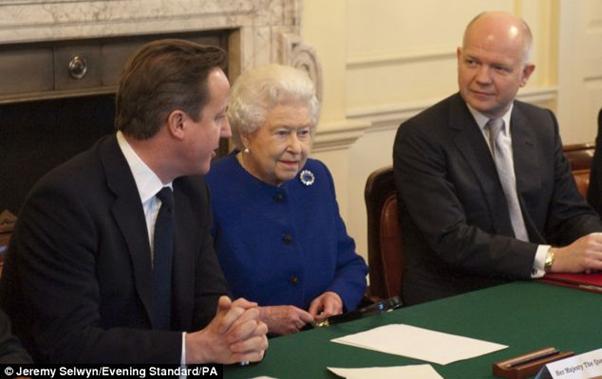
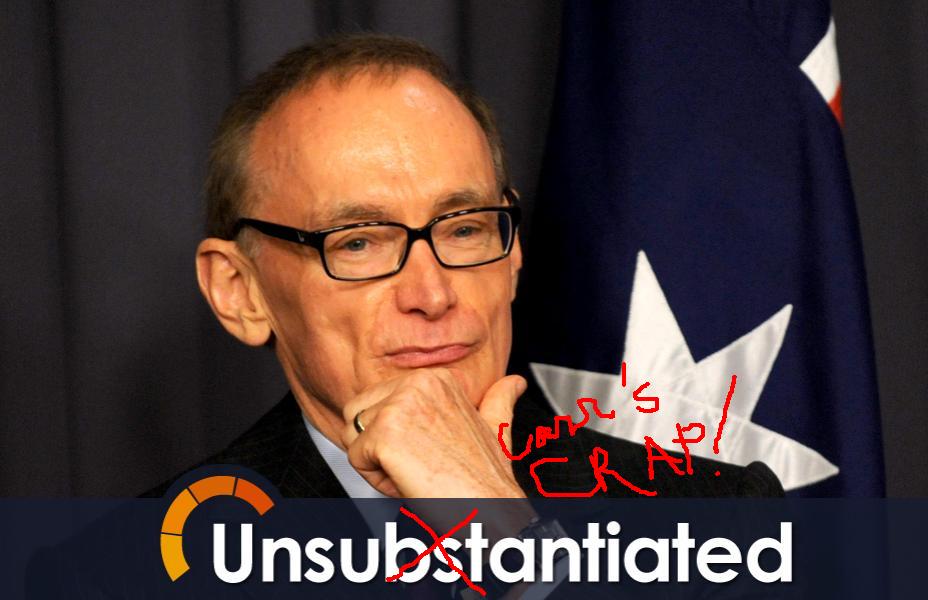
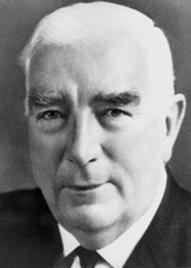
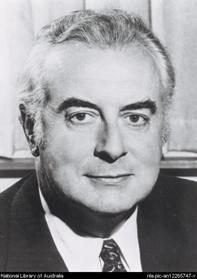
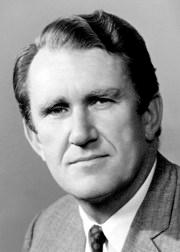
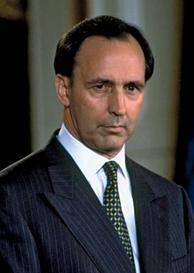



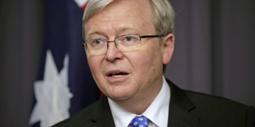
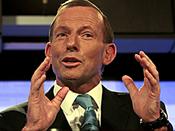
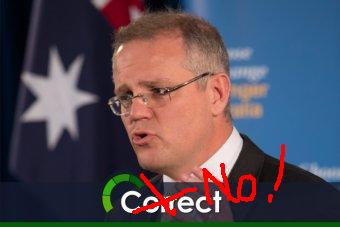
Comments
Steve Irons
Wed, 17/09/2014 - 3:52pm
Permalink
Alastair Nicholson: Call for immediate release
http://www.unicef.org.au/Media/Media-Releases/2014-9--September/Call-for...
Call for immediate release of all children in immigration detention
17/09/14
LEADING children’s, international development, human rights and refugee organisations from Australia, across the Asia-Pacific and internationally are calling on Australia’s leadership to release all children and their families from immigration detention.
"Economically, legally and morally, the cost to Australia of the current policies surrounding immigration is not sustainable," said the Hon Alastair Nicholson, spokesperson for the group and Chair of Children’s Rights International.
"No one can tolerate deaths at sea, but neither can we tolerate severe and prolonged mistreatment of children under Australia’s care as is happening in the current system. Australia should be investing in humane and affordable alternatives, instead of spending $3 billion this year in locking up a very small number of asylum seekers, including children," said Mr Nicholson.
Recognising Australia alone cannot solve the complex challenges facing displaced people around the world, our organisations have committed to advocating for genuine cooperation in the Asia-Pacific region to offer better protection for children and their families fleeing persecution.
Attendees included:
• Amnesty International,
• Children's Rights International,
• Human Rights Council of Australia,
• International Detention Coalition,
• Plan International Australia,
• Refugee Council of Australia,
• Save the Children,
• UNICEF Australia and
• World Vision.
Participating organisations committed to working together to provide leadership, policy alternatives and improve transparency in the immigration system.
"The treatment of children in the current system is unacceptable. It's time to stop the harm and develop a policy every Australian can be proud of," concluded Mr Nicholson.
READ more: http://www.unicef.org.au/Media/Media-Releases/2014-9--September/Call-for...
Steve Irons
Tue, 16/09/2014 - 3:22pm
Permalink
Open letter to the Attorney-General
Open letter to the Attorney-General regarding the Optional Protocol to the Convention against Torture
http://castancentre.com/2014/09/16/open-letter-to-the-attorney-general-r...
September 16, 2014
Asylum, Australia, Freedom from cruel inhuman and degrading treatment, Freedom from torture, George Brandis, United Nations
The following is an open letter to the Commonwealth Attorney-General, The Hon. George Brandis QC, signed by 64 organisations including the Castan Centre for Human Rights Law. The letter is dated 15 September 2014.
Dear Attorney,
Optional Protocol to the Convention against Torture and other Cruel, Inhuman or Degrading Treatment or Punishment
We, the undersigned organisations, are writing to urge the Australian Government to ratify the Optional Protocol to the Convention against Torture and other Cruel, Inhuman or Degrading Treatment or Punishment (OPCAT) and implement a National Preventative Mechanism (NPM) without delay.
We welcomed Australia’s signing of OPCAT in 2009. Now in ratifying OPCAT the Australian Government will demonstrate, nationally and internationally, its commitment to safeguarding the human rights of people deprived of their liberty in all places of detention, including prisons, police lock ups, juvenile detention centres, immigration detention centres, mental health facilities and forensic disability units.
The aim of OPCAT is to strengthen the protection of persons deprived of their liberty through non-judicial means of a preventative nature. We strongly support this goal and believe that independent monitoring by autonomous bodies under OPCAT will serve to strengthen a culture of human rights within Australian detention facilities.
Since Australia signed OPCAT in 2009, a National Interest Analysis has been conducted and in 2012 the bipartisan Joint Standing Committee on Treaties completed an inquiry into Australia’s ratification of OPCAT. We strongly support the recommendation of the Committee that the Australian Government work in collaboration with the States and Territories to ratify OPCAT and implement a NPM as soon as possible.
In supporting the recommendation of the Committee, we point to the importance of the accountability mechanism provided by the Subcommittee on Prevention of Torture (SPT). The Committee identified that the SPT has proven to be a valuable and successful mechanism in exercising oversight and providing support for State Parties as they implement OPCAT.
Ratification of OPCAT would provide the opportunity for the SPT to lend its expertise to Federal, State and Territory jurisdictions in aligning existing mechanisms to meet the requirements of OPCAT, particularly the establishment and implementation of a NPM. Australian jurisdictions have monitoring bodies already in existence and ratification of OPCAT would allow cooperation with the SPT to modify these institutions under guidance to form a NPM.
The Australian Government has stated its intention to postpone the implementation of a NPM. We do not support this intention as delayed implementation of a NPM would render Australia’s ratification of OPCAT symbolic rather than effective, potentially compromising Australia’s stated commitment to human rights.
In light of the consultative processes already undertaken by the Australian Government and the initiation of a collaborative approach between the Federal, State and Territory Governments to reform existing inspection bodies, there exist no reasonable obstacles to Australia’s immediate ratification of OPCAT and the implementation of a NPM.
OPCAT, the SPT and the NPM bodies safeguard the human rights of people in custodial settings and provide independent oversight of places of detention. The transparency and accountability offered by OPCAT and its mechanisms provide Australia with the opportunity to act as regional and global model for best practice on human rights in places of detention.
In the lead up to Australia’s review before the UN Committee against Torture in Geneva in 2014, we call on the Australian Federal, State and Territory Governments to commit to ratifying OPCAT in full and implementing a NPM without delay.
Yours sincerely,
The undersigned organisations
Act for Peace
ActionAid
Afghan Australian Development Organisation
Amnesty International
ANTaR
Association for the Prevention of Torture
Association for Services to Torture and Trauma Survivors
Asylum Seekers Centre
Asylum Seeker Resource Centre
Australian Churches Refugee Taskforce
Australian Council for International Development (representing over 140 member organisations)
Australian Lawyers Alliance
Australian Lawyers for Human Rights
Australian Tamil Congress
Castan Centre for Human Rights Law
Centre for Peace and Conflict Studies
Children with Disability Australia
ChilOut
Civil Liberties Australia
Companion House Assisting Survivors of Torture and Trauma
Consumers Health Forum of Australia
Disability Discrimination Legal Service
Domestic Violence Legal Workers’ Network
Edmund Rice Centre
Equality Rights Alliance (representing 62 member organisations)
Federation of Community Legal Centres Victoria
Forum of Australian Services for Survivors of Torture and Trauma
Foundation House
Human Rights Law Centre
Human Rights Watch
Hunter Community Legal Centre
Islamic Relief Australia
Jesuit Refugee Service
Kingsford Legal Centre
Mahboba’s Promise
Medical Association for Prevention of War
Melaleuca Refugee Centre Torture and Trauma Survivors Service of the Northern Territory Inc
Mental Health Carers ARAFMI Australia
National Association of Community Legal Centres
National Child Rights Taskforce
National Children’s and Youth Law Centre
National Congress of Australia’s First Peoples
Oxfam Australia
People with Disability Australia
Phoenix Centre Support Service for Survivors of Torture and Trauma
Public Health Association of Australia
Public Interest Advocacy Centre Ltd
Queensland Advocacy Incorporated
Queensland Program of Assistance to Survivors of Torture and Trauma
Refugee Council of Australia
Save the Children
SCALES Community Legal Centre
Service for the Treatment and Rehabilitation of Torture and Trauma Survivors
Settlement Council of Australia
Sisters Inside
Survivors of Torture and Trauma Assistance and Rehabilitation Service Inc
TEAR Australia
UN Association of Australia
Uniting Church in Australia Assembly
Women’s Electoral Lobby
Women’s Law Centre
Women’s Legal Services Australia
Women with Disabilities Australia
YWCA Australia
Copy to:
Mr Simon Corbell MP, ACT Attorney-General
Hon Bradley Hazzard MP, NSW Attorney-General
Hon Johan Wessel Elferink MLA, NT Attorney-General
Hon Jarrod Bleijie MP, QLD Attorney-General
Mr Jon Rau MP, SA Attorney-General
Ms Vanessa Goodwin MLC, TAS Attorney-General
Hon Robert Clark MP, VIC Attorney-General
Hon Michael Mischin MLC, WA Attorney-General
http://castancentre.com/2014/09/16/open-letter-to-the-attorney-general-r...
Steve Irons
Tue, 02/09/2014 - 12:53am
Permalink
Julian Burnside: Abbott should face court
"Human rights advocate and lawyer Julian Burnside has told protesters in Melbourne they can look forward to seeing Tony Abbott in the dock in an international court.
"Today's protest against the federal government's policies and budget drew around 10,000 people, although organisers put the figure closer to 20,000.
"Mr Burnside criticised the government's policy on refugees.
"'The way they are treating refugees in Australia is a crime, and there has already been a reference put into the international criminal court complaining of that very treatment,' he said, drawing a cheer from the crowd outside the Victorian Parliament.
"'If you feel exhausted keeping up the pressure on the government, if you feel so tired you can't keep going, just support yourselves with the vision of Tony Abbott and Scott Morrison in the dock at The Hague.'"
READ more: http://www.9news.com.au/national/2014/08/31/16/50/abbott-should-face-cou...
Steve Irons
Mon, 01/09/2014 - 9:31pm
Permalink
Morrison & Abbott named in ICC submission
Wayne Jansson Citizen Journalist at No Fibs August 31, 2014
http://nofibs.com.au/2014/08/31/morrison-and-abbott-named-in-internation...
"THE International Criminal Court (ICC) in The Hague is currently considering a submission calling for an investigation into Australia’s treatment of asylum seekers.
"The submission was officially accepted by the ICC on May 19, 2014, it names senior members of government.
"No Fibs has now seen the full submission, however, after advice from experienced investigators, we decided against publishing the document. The advice was publication could harm any possible future investigation. We have published the executive summary (below).
"The submission was prepared by lawyer and migration agent Tracie Aylmer, who also does volunteer work in a legal capacity.
"Tracie told No Fibs she prepared the submission to ensure international law was upheld and to return humanity to those who have been persecuted.
"The submission names:
READ more at: http://nofibs.com.au/2014/08/31/morrison-and-abbott-named-in-internation...
M'Lady Larvey
Tue, 22/04/2014 - 2:46pm
Permalink
Yes we can!
Yep! Let's do our best to take them to International court. Happy to contribute in anyway I can. ENOUGH IS enough FOLKS!
Larvey
Add new comment